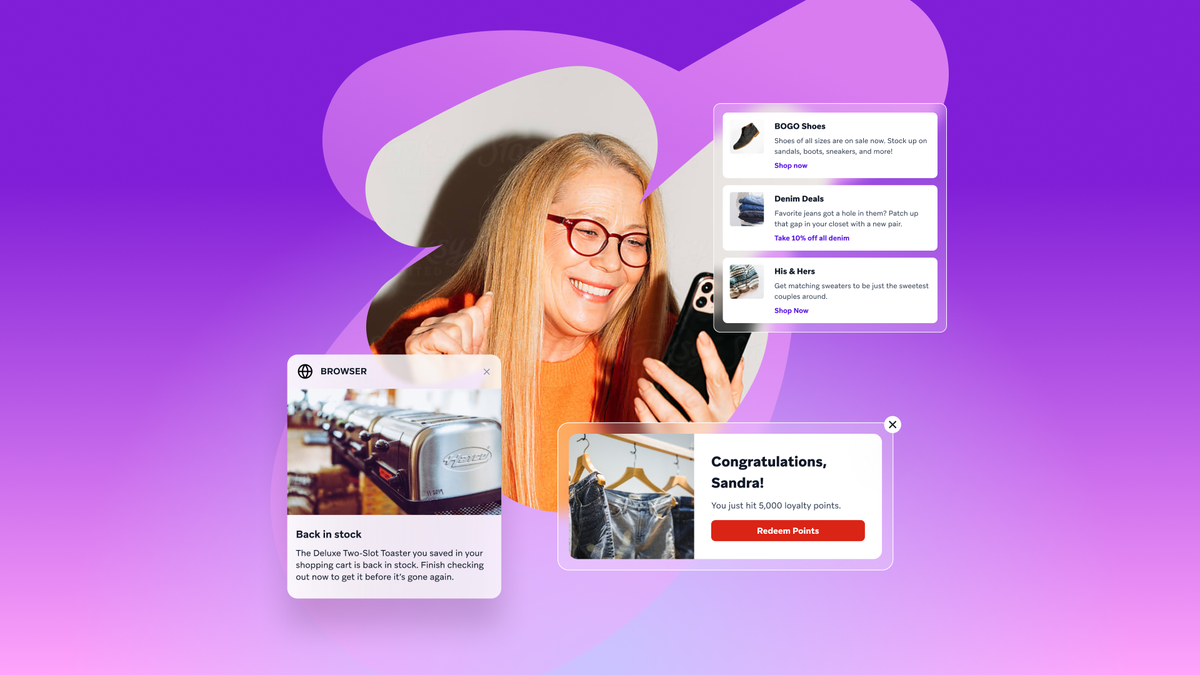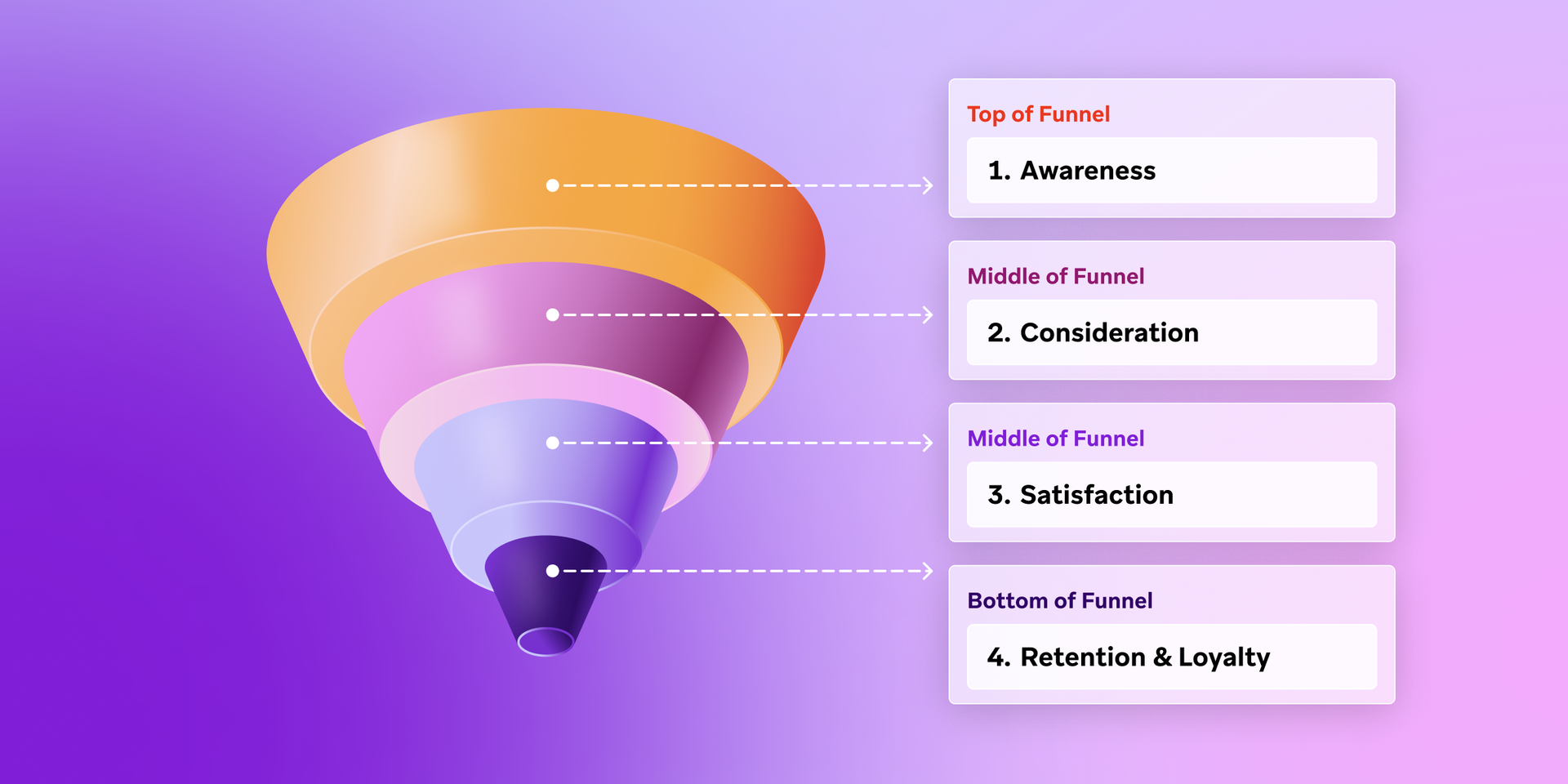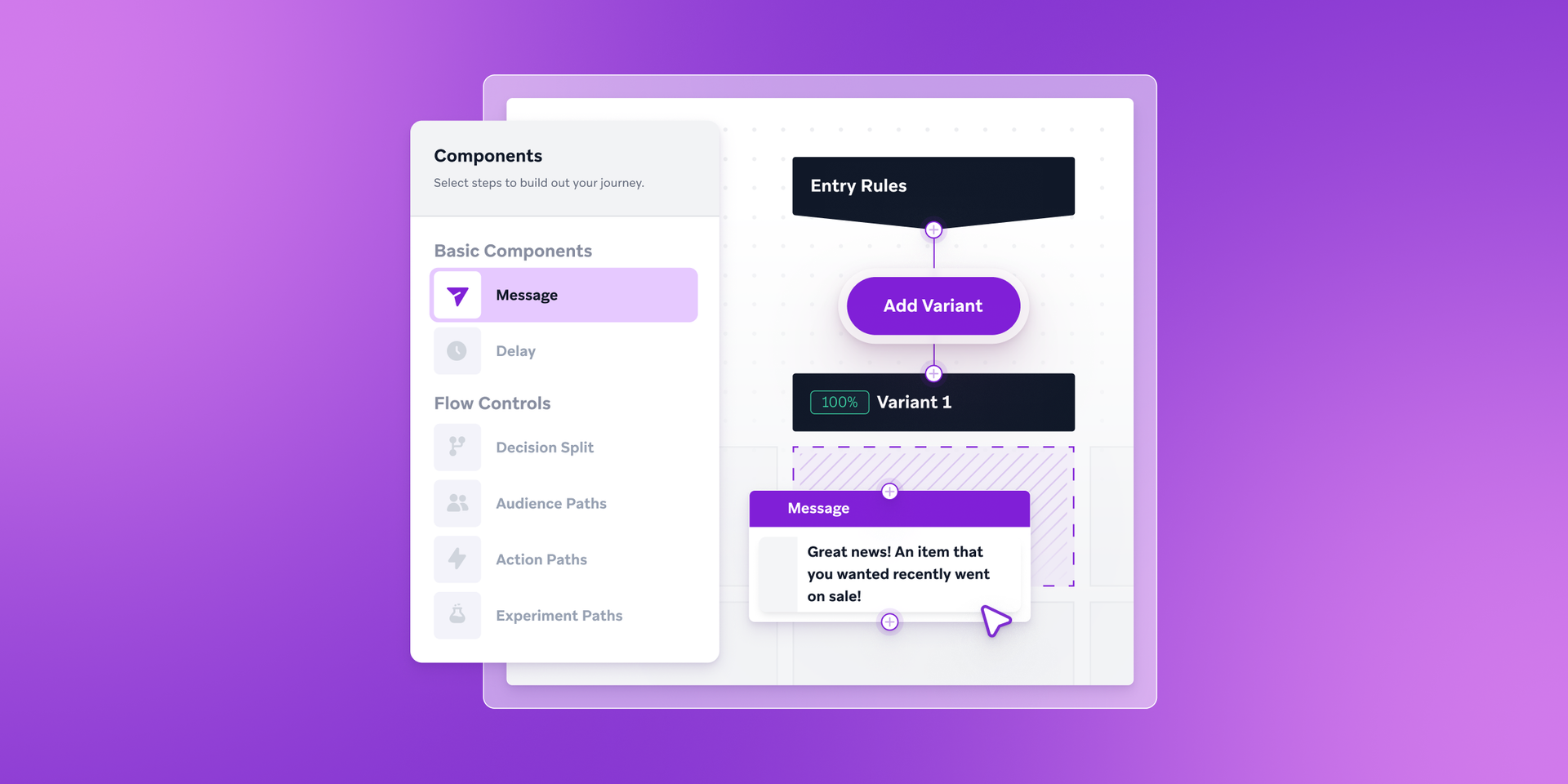Understanding customer lifecycle marketing: Why it matters and how to implement it
Published on July 25, 2025/Last edited on July 25, 2025/7 min read


Team Braze
Customer lifecycle marketing is all about engaging with customers at different stages of their relationship with a brand. When done well, customer lifecycle marketing helps brands drive and sustain value over time. Just like our personal relationships, when brands demonstrate their understanding and relevance through different stages of the relationship, they are likely to form deep, lasting connections with their customers.
Lifecycle marketing is a strategic and essential part of customer engagement. It starts with a customer's initial awareness of the brand, continuing through multiple purchases and engagements, and continues to long-term loyalty and brand evangelism. By understanding and optimizing messaging at each of these stages, businesses can create targeted marketing campaigns that enhance customer engagement, retention, and ultimately, profitability.
What is customer lifecycle marketing?
At its core, customer lifecycle marketing is about being customer-centric. Brands that prioritize using their customers’ data and preferences to create meaningful connections are the ones that are poised to earn long-term customer loyalty.
By analyzing customer attributes—such as behaviors and preferences—alongside their position in the customer journey (from lapsing to active or loyal), companies can craft meaningful campaigns that resonate with their audience.
Implementing a customer lifecycle marketing strategy requires collecting the right data and activating it throughout the customer journey. Proper journey orchestration involves having effective technology in place to capture and react to this information in real time. Without a robust framework, businesses risk facing negative KPIs and outcomes, including poor engagement, low conversion rates, and reduced customer lifetime value (LTV).
Customer lifecycle email marketing: Engaging customers on a powerful channel
Email marketing is a powerful tool in customer lifecycle marketing. By sending targeted emails based on where customers are in their journey, brands can nurture relationships and encourage conversions. For instance, welcome emails can engage new users, while re-engagement emails can target those who have lapsed. This tailored approach means that customers receive relevant content that meets their needs at each stage of their lifecycle.
Developing a winning customer lifecycle marketing strategy
Developing a winning customer lifecycle marketing strategy is important for businesses looking to build lasting relationships with their customers and drive sustainable growth. This approach involves understanding the various stages of the customer journey—from awareness and consideration to purchase and retention—and tailoring marketing efforts to meet the unique needs and preferences of customers at each phase.
By leveraging data-driven insights and personalized communication, brands can create targeted campaigns that resonate with their audience, ultimately increasing loyalty and lifetime value.

Customer lifecycle marketing campaign ideas
Activation campaigns
Designed to encourage new users to engage with a product or service for the first time, activation campaigns help them realize its value. Here are some examples:
- Welcome campaigns: Automate targeted messaging to engage new users who have signed up but are not actively interacting with your app or website. It’s important to provide them with a clear understanding of your product's value and encourage exploration of its high-value features.
- App download campaign: Campaign aimed at encouraging web users to download a mobile app by highlighting app benefits based on their current behavior, ultimately driving stronger engagement and enhancing the value they receive from the product.
Consideration campaigns
A consideration campaign aims to nurture potential customers who are evaluating a product or service, providing them with relevant information, comparisons, and incentives to facilitate their decision-making process. Consider:
- Cart abandonment notification: Follow up with users who start the sign-up process but do not complete it to encourage them to come back to make the purchase.
- Free trial campaign: Offer previews of premium content to entice users to upgrade to a paid subscription.
Satisfaction campaigns
Focusing on gathering feedback from existing customers or encouraging them to share good experiences, satisfaction campaigns often use surveys or follow-up communications to address any concerns:
- Ratings and review prompts: Target satisfied users with requests for reviews, as half of app reviews result from in-app prompts.
- Refer-a-friend campaign: Timing is crucial; ask for referrals after establishing a positive relationship, and consider offering rewards for doing so.
Retention and loyalty campaigns
A retention campaign is a strategic initiative aimed at keeping existing customers engaged and loyal to a brand by offering personalized content, rewards, and incentives that encourage repeat purchases and long-term relationships, such as:
- Reward programs: Create consumer-centric loyalty programs that offer perks for healthy choices and purchases.
- Gamification and milestone messaging: Acknowledge user achievements, such as workout milestones, to encourage social sharing and reinforce engagement.
B2B customer lifecycle: Tailoring strategies for business clients
In the business-to-business (B2B) space, customer lifecycle marketing takes a different approach than business-to-consumer (B2C). Businesses should consider longer sales cycles and the importance of relationship-building. Tailoring marketing strategies to address the specific needs of business clients at each stage of their lifecycle is a helpful strategy. This may involve personalized outreach, targeted content, and ongoing support to ensure that B2B customers feel valued and engaged throughout their journey.
Using zero- and first-party data to optimize customer lifecycle marketing
In today's data-driven landscape, leveraging zero- and first-party data is at the center of optimizing marketing strategies across the customer lifecycle.
Zero-party data is data that customers willingly share with brands, such as preferences and feedback. By collecting this information through surveys, preference centers, or interactive content, brands can gain valuable insights into their customers' needs and desires. This data allows for personalized marketing efforts that resonate with customers at each stage of their lifecycle.
First-party data is data collected directly from customers through their interactions with a brand, such as website visits, purchase history, and engagement metrics. Frst-party data enables brands to create a comprehensive view of their customers, allowing for targeted campaigns that address specific behaviors and preferences. This data is particularly valuable for segmenting audiences and personalizing messaging to enhance engagement and conversion rates.
By effectively utilizing zero- and first-party data, brands can create more relevant messaging that align with customer expectations, which can improve retention and loyalty. The right platform can help marketers segment customers by lifecycle, in real time, using their zero- and first-party data signals.
Choosing the right customer lifecycle marketing software
To effectively implement a customer lifecycle marketing strategy, businesses need the right technology. Customer lifecycle marketing software can help brands track customer interactions, analyze data, and automate marketing campaigns. These tools enable companies to create personalized experiences, ensuring that customers receive relevant messages that add value to their experience. This attention to detail can enhance engagement and retention.
Fiverr + Braze Canvas: Optimizing lifecycle marketing
Fiverr, a global freelance services marketplace, needed technology that could keep pace with its rapid growth and facilitate a more cohesive approach to customer interactions.
Fiverr turned to Braze, using Braze Canvas to visualize and manage customer journeys as a continuous experience flow, rather than a series of isolated interactions. The platform's ability to support seamless testing of different campaign variants within a single visual interface allowed Fiverr to rapidly experiment with multiple approaches.
In one campaign, Fiverr tested four different strategies aimed at encouraging users to make their first purchase, comparing the results against a control group that received no messaging. With Braze Canvas, Fiverr could analyze how factors such as message timing and channel choice influenced purchase behavior.

The results: All tested approaches outperformed the control group, with the best-performing variant driving a 9% increase in purchases, a 10%increase in average order value, and a 21% increase in revenue.
Graduate to advanced lifecycle marketing
Congratulations! You've completed your crash course in customer lifecycle marketing. By implementing these strategies, you can enhance customer engagement in a customer-centric way and drive profitability.
Mastering customer lifecycle marketing is essential for any brand looking to thrive in today's competitive landscape. By understanding your customers and tailoring your marketing efforts to their journey, you can foster lasting relationships that benefit both your customers and your business.
Related Tags
Releated Content
View the Blog
The new inbox reality: How iOS changes are reshaping email marketing

Aparna Prasad

Experience optimization: Turning data insights into better journeys

Team Braze

December 2025 Bonfire Marketer of the Month: Jagex’s Emma Oliver
